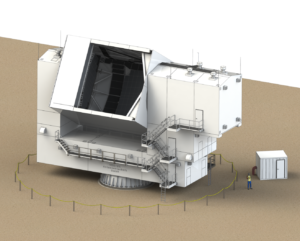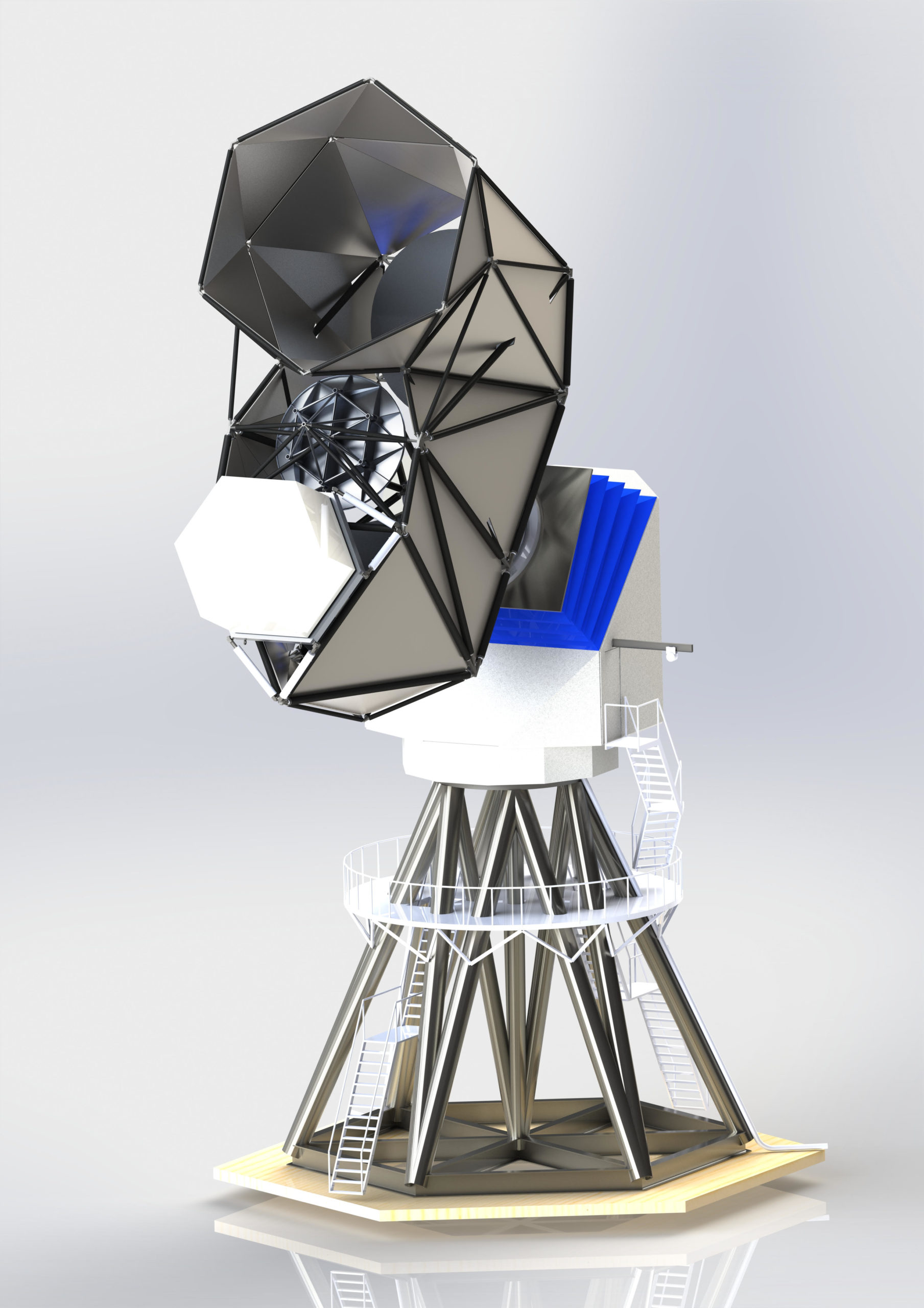Large Aperture Telescopes
At the heart of CMB-S4 are new large aperture telescopes designed to provide an enormous increase in sensitivity for mapping the cosmic microwave background. They are able to achieve this improvement by using novel optical designs that support cameras with extremely large focal planes each containing of order 130,000 superconducting detectors. The telescope optics are also designed to have no blockage – so called off-axis optical designs – to minimize any stray microwave light, such as emission from the ground and other structures, from being scattered in the view of the camera.

Two Cross-Dragone (CD) telescopes (left image) with six meter diameter input apertures will be deployed at the Chilean site to map roughly 70% of the sky every day to support the dark universe, matter-mapping, and time-varying mm-wave sky science goals.

One Three Mirror Anastigmat (TMA) telescope (right image) with a five meter diameter input aperture will be deployed at the South Pole to map roughly 3% of the sky several times a day, primarily to support the inflation science goal but also contributing an ultra-deep field for the matter-mapping and time-varying mm-wave sky goals. The inflation science goal requires exceptional sensitivity, and places especially stringent requirements on the elimination of systematic contamination wherever possible and mitigation of any residual effects. The TMA design includes additional novel design features, such as the ability to rotate the entire telescope optics along the line of sight and using monolithic (gapless) mirrors to further reduce contamination from scattered light reaching the camera.
The cameras for all three telescopes share a common design. Each has effectively 85 separate cameras contained in a single cryostat, with the detectors cooled to 0.1 Kelvin (-459 F).
Small Aperture Telescopes
A total of 9 small aperture telescopes are dedicated to measure odd-parity polarization fluctuations, or so-called B-modes, at degree scales. Employing fully cryogenic refractive optics and approximately 75,000 superconducting detectors in total, these telescopes are designed to achieve supreme sensitivity with unparalleled stability and fidelity to signals on degree scales.

This is critical to their mission of probing signals as faint as the possible signature of rapid expansion of the early universe, or so-called cosmic inflation. The 18 telescopes collectively observe the sky in a wide range of frequencies, 30-300 GHz, allowing distinction between cosmological signals and radio and dust emission from our own galaxy.

The newly designed receiver cryostat houses three independent telescopes, each with a focal plane of superconducting detectors cooled to 0.1 Kelvin using a common dilution refrigerator. The receiver is mounted on a three-axis platform, where the third axis rotates the receiver around the line of sight and provides a powerful test of the fidelity of polarization signals. The telescopes are equipped with multiple stages of external ambient-temperature optical shielding to mitigate signal contamination and sensitivity degradation due to stray light from the ground.